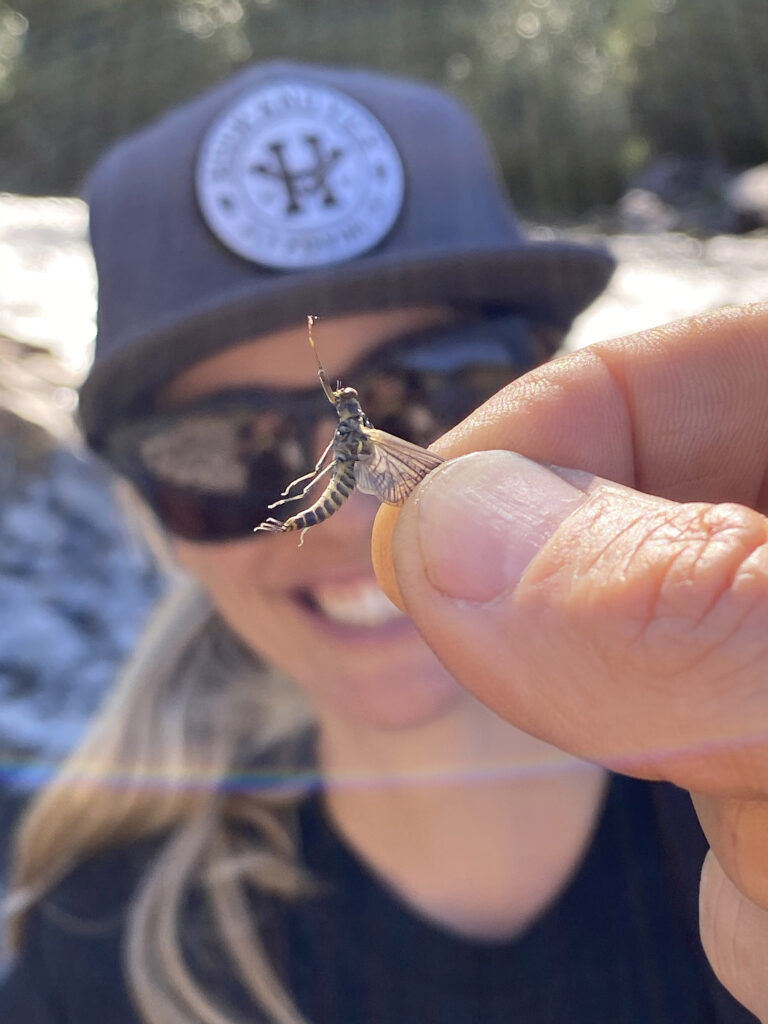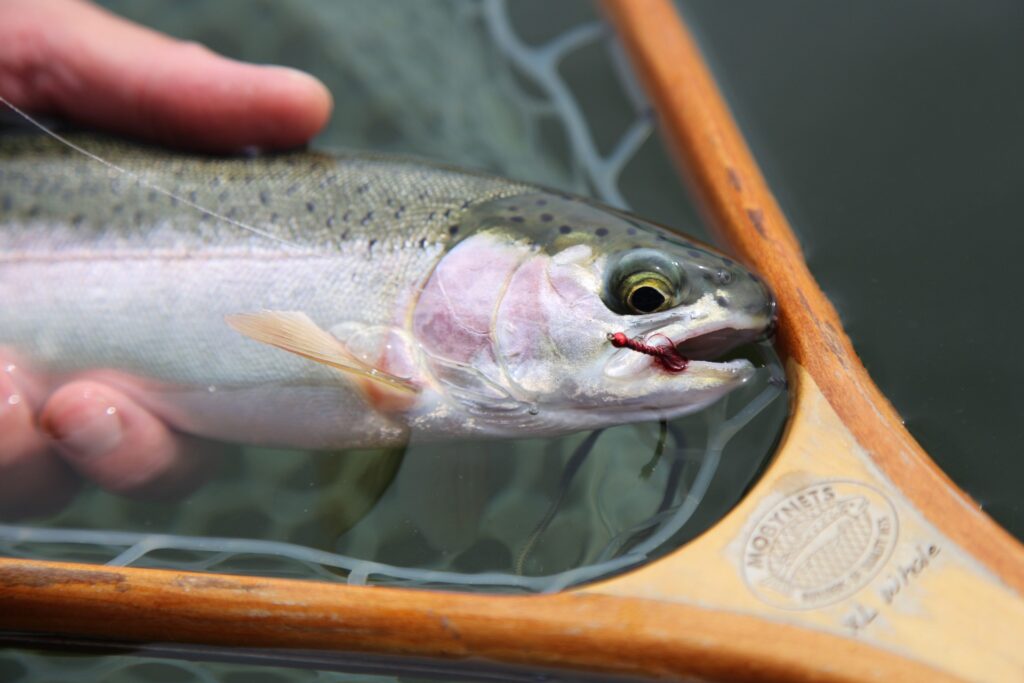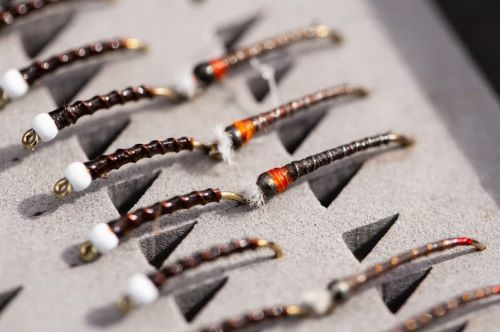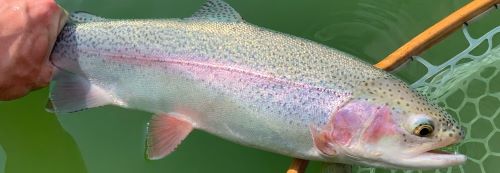Spring has finally arrived, and the fishing season is already well underway on lakes in the coastal regions of British Columbia. The first few low-elevation lakes in the southern Interior are now ice-free; serious anglers are ready to start fishing. Stillwater fly-fishers look forward to the first insect hatches of the year, always midges, which are more commonly referred to as chironomids.

Members of the Dipteran order of insects, there are over 2,500 species of chironomids found in freshwater habitats throughout North America. Adult midges look like mosquitoes, but the females do not feed on blood. They are one of the most abundant food sources found in small lakes throughout our province. Since trout, char, and even kokanee feed extensively on chironomids, these small insects make a great food source for fly-tyers to imitate.
Chironomid Lifecycle
In a typical one-year life cycle, chironomids undergo a complete metamorphosis that includes egg, larva, pupa, and flying-adult stages. After hatching, the larvae live buried in the mud/water interface at the bottom of a lake at depths ranging from a couple of metres to over 25 metres. The larvae, commonly red or green in colour, have a worm-like body shape with distinct segmentation. They feed on decomposing plant and other organic matter. Once fully developed, the larvae seal themselves in a tube-shaped structure at the bottom of the lake.

Inside this structure, the larvae transform into the pupal stage. When fully mature, the pupae break out of the old larval structure, and ascend to the lake’s surface to complete their emergence to the adult stage.
Once at the surface, the adult chironomid emerge from the old pupal shuck, and fly off the water to nearby shoreline vegetation. Mating occurs within 24 hours of emergence. Egg-laden females return to the lake to release their eggs, which sink to the lake bottom. Eggs hatch into microscopic larvae, which settle into the bottom substrate to start the next generation of chironomids.

Chironomid Patterns and Retreival Techniques
Chironomid larvae and pupae are highly sought-after by game fish. Trout and brook char actively search out the larvae, also known as bloodworms, that are hidden in the bottom substrate of the lake. Bloodworms can get quite large: as long as 25 millimetres. The early spring and late fall are always good times to try fishing bloodworm fly patterns. A good technique for presenting larval patterns is to use a floating fly-line with strike-indicator set-up that suspends larval patterns within a few centimetres of the bottom.
Trout, brook char, and kokanee also target chironomid pupae as they are making their vertical ascent to the lake’s surface. Pupae could be emerging from water as shallow as two metres, with the majority of hatches occurring in depths between three and eight metres. During a heavy hatch, there could be literally hundreds of thousands or more chironomid pupae slowly rising through the water. The pupae do not swim, but use gases built up under their outer cuticle to float them to the surface. Fish just slowly swim through, and gorge themselves on the masses of helpless pupae.
Since chironomid pupae come in a variety of sizes and colours, the key to success is having the right size and colour of pupal imitation. The predominant sizes are imitated using size #14 to #10 scud hooks; the most common pupal body colours are black, shades of green, brown, maroon, and silver. Carry a small aquarium net to capture pupae as they reach the surface, then match your fly’s hook size and pattern colour. A floating fly-line with strike-indicator set-up is the easiest, and often most effective, way to fish your pupal imitation. As most pupal-feeding occurs within about a metre of the lake bottom, start fishing your fly about 30 centimetres off the bottom regardless of the depth you are anchored in.

Chironomids are the most abundant aquatic insect in lakes. They hatch throughout the open-water period, but emergences are heaviest in the spring. Your local fly or tackle shop can help to set you up with the right gear and flies. There are also numerous books and videos that feature chironomid fly-fishing tactics, and instructions on tying chironomid fly patterns.
It’s time to get out and take advantage of this spring’s chironomid fishing.
Author: Brian Chan, Fishing Advisor, Freshwater Fisheries Society of BC
Images: Brian Chan, Marty Smith, Noel Fox.
